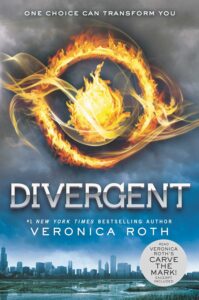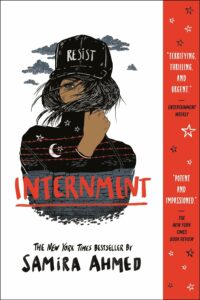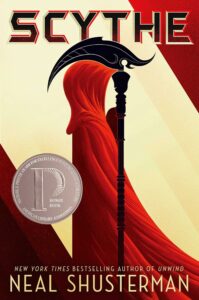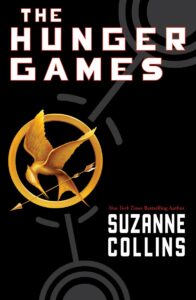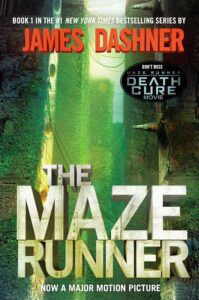Sarah Kroese and Bill Boerman-Cornell
One of the most popular genres of young adult (YA) fiction is dystopian literature. Readers flock to these books, intrigued by the futuristic worlds and strong characters. Among these characters are women who are the very essence of toughness. Our students read dystopian literature, but we rarely teach it. What thematic material is in these books, and what might it offer teachers in Christian schools?
Our students read dystopian literature, but we rarely teach it.
It is interesting to contrast today’s dystopian heroines and the characters in traditional fairy tales. In many traditional fairy tales across global cultures, there is a weak, highly emotional female character who must be saved by a prince or hero. She has no agency, no desire to do anything with her life except be rescued and loved. Examples of these stories include Rapunzel, Snow White, and Sleeping Beauty. Each of these women were helpless, waiting for a man to be the hero. For instance, Rapunzel never thought of climbing down her own hair to rescue herself. She simply waited for the prince who then had to make the suggestion that her hair might offer a way out.
[D]ystopian authors have created female characters so tough that, like male action heroes, they seem to have few emotions other than anger.
The heroic and strong women of dystopian young adult literature offer a stark alternative. Instead of the weak feminine image posed in fairy tales, dystopian authors have created female characters so tough that, like male action heroes, they seem to have few emotions other than anger. To investigate this, we analyzed some of the most popular YA dystopian literature of our time.
First, it is important to remember what dystopian literature is. Dystopian novels take a present aspect of our world, such as a negative social, economic, or political influence, and imagine what the future might look like if that aspect of the present continued or perhaps became more prevalent. We looked at a collection of books that are widely read among middle schoolers and high schoolers. We selected the following five titles: Divergent, Internment, Scythe, The Hunger Games, and The Maze Runner. These books are immensely popular among young readers today, and Divergent, The Hunger Games, and The Maze Runner have even been adapted for the cinema. Before we dive into the findings from our analysis, let us offer a brief synopsis of each.
Divergent, by Veronica Roth, is the story of a world divided by factions. Every member of society must choose a faction to belong to that fits their personality. The Dauntless faction concentrates on fearlessness. Erudite puts its trust in reason and science. Abnegation is a group for humble people, and so on. However, there are some people that do not fit in just one place. Tris is one of these individuals, known as “the divergent.” She chooses to join the Dauntless. Shortly after, a war on the divergent begins, and Tris must fight for her life and those around her.
Internment, by Samira Ahmed, explores what would happen if partisan hatred of Muslims, exacerbated by another terrorist attack, might result in the United States reintroducing internment camps. Layla, a Muslim teenager, and her family are detained and put into such a camp (the same camp held American citizens of Japanese ancestry during World War Two). Layla is outraged at this injustice and fights to free herself and those around her.
In Neal Shusterman’s Scythe, we see a world where people no longer die, due to advances in the field of medicine. However, to keep the population under control, individuals called scythes must kill a certain number of people each year. A young woman named Citra becomes a scythe apprentice, along with a young man named Rowan, and they must compete to win the right to be a scythe. Citra herself must face the challenge of the moral questions surrounding the notion of killing for the good of all.
The Hunger Games, by Suzanne Collins, is like a reality TV show gone dark. As punishment for an uprising, each of twelve districts must send a boy and girl to the Hunger Games to fight to death in an arena. Only one can survive. Katniss volunteers to take the place of her sister in the games and faces the idea of killing or being killed.
Finally, in The Maze Runner, by James Dashner, we see a group of boys who are trying to escape from the maze they are trapped in. One day, the first girl arrives at their camp from the box where they get their supplies. She, Teresa, might be the key to getting them out of the maze. However, she also might be the reason they are stuck there in the first place.
We were interested in what kinds of emotions each of these women in the books projected. We recorded and coded each instance where a female protagonist showed any kind of emotion.
We were interested in what kinds of emotions each of these women in the books projected. We recorded and coded each instance where a female protagonist showed any kind of emotion. These emotions were divided into two categories, soft emotions and hard emotions. Soft emotions, or vulnerable emotions, are things like sadness, love, and gentleness. Hard emotions are feelings like anger, hostility, aggression, and coldness. This is an abridged version of this article. To read more, subscribe to the print or digital edition of Christian Educators Journal.
Bill Boerman-Cornell is a Professor of Education at Trinity Christian College in Palos Heights, Illinois. A former teacher at Illiana Christian High School, he has co-written four books about using graphic novels in the middle school and high school classroom, and another book about having better discussions about faith and literature in the secondary classroom. His former students are amazing teachers, especially Sarah Kroese. He loves reading, biking, writing, and laughing.
Sarah Kroese is an English and Bible teacher at Illiana Christian High School in Dyer, Indiana. She graduated with highest honors from Trinity Christian College in the spring of 2023. While there, she had the privilege of writing and working collaboratively with Bill Boerman-Cornell. She loves reading, traveling, working out, and rock climbing.
Works Cited
Ahmed, Samira. Internment. Little Brown, 2019.
Collins, Suzanne. The Hunger Games. Scholastic, 2008.
Dashner, James. The Maze Runner. Ember, 2011.
Roth, Veronica. Divergent. HarperCollins, 2011.
Shusterman, Neal. Scythe. Simon and Schuster, 2016.
